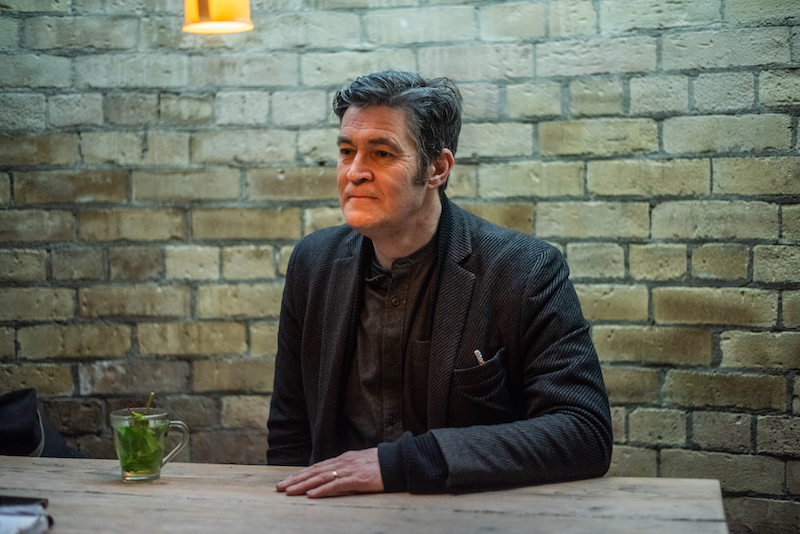These days, we tend to discourage mistake-making, and place a hefty value on perfection. But for Prof Philip Napier, the director of a new elective in Trinity on contemporary art, “to make mistakes but to … fail marvellously or gloriously because it was a real attempt, I think, is terrific”.
Starting next year, students can choose to study the new module, Contemporary Art Angles, as part of the Trinity Education Project (TEP) and in collaboration with National College of Art and Design (NCAD). The idea of electives is to give students whose course might have a narrow focus on a specific subject a more holistic education. Napier, who heads up NCAD’s fine art department, says he hopes students will “step into that unknown experimental place”.
And contemporary art is arguably the best place to step into the unknown – for a lot of Trinity students, at least.
Citing the example of Ken Robinson, the British author and former professor of arts education at the University of Warwick, with his TED talk “Do Schools Kill Creativity?”, Napier says creativity has often been driven out of adults and stresses the immense opportunity that this elective provides students to get in touch with their creative side. Approaching creativity and art in adulthood, he says, should be encouraged, not seen as a “scary thing”.
To make mistakes but to fail marvellously or gloriously because it was a real attempt, I think, is terrific
By valuing ventures into the creative process, this elective seeks to expand students’ horizons and views on the art world, while allowing them to develop their creative flair no matter how much, or how little, experience they may have. These creative endeavours are supported by the creation of a contextual notebook, which constitutes the entire assessment method of the elective. However, Napier says that “students don’t need to be worried or concerned about what that is”, because throughout they will be supported in fulfilling this project.
Although Napier recognises that an elective on such a subjective subject like art may be viewed by students as a little nebulous, and there may be a “persistent anxiety” associated with its subjectivity, he insists on the innate value in such a subject, and encourages students who may doubt if the elective is right for them to “have a wee bit of courage”. Electives, after all, are less about practicality and more to do with expanding the mind and supplementing your degree with extra knowledge.
Students from a variety of discipline backgrounds can choose this module and get in touch with their creative side, with Napier stressing that “art learning is applicable in lots of ways, across all sorts of disciplines”.
But Napier is quick to stress that students should not be banking on becoming the next Picasso from their studies: “I don’t think we’re trying to make anyone an artist.” Instead, he suggests, “we’re interested in how people communicate and how that might be artful”. Napier encourages students to have a “bold curiosity about what artists do and what they think about”.
The Contemporary Art Angles elective aims to provide students with the ability to engage with the spectrum of ideas that make up contemporary art and that are outside their courses – whether that be engineering or law or any assortment of degrees offered in Trinity. It allows students from outside the art discipline to explore a variety of perspectives, from art research methods and decision-making to art outcomes as well as giving them the opportunity to create their own sample of contemporary art through the creation of the contextual notebook.
Offering a unique opportunity to learn about the variety of contemporary practices in art, as well as being able to hear from artists first-hand about their work, this new experience is an example of what TEP hopes to achieve. Given that many students won’t have had the opportunity to study art since secondary or even primary school, this elective provides students with the ability to dip their brush back into ink and reconnect with their artistic capabilities.
Aside from helping students bring new sources of information into their courses, however, learning about contemporary art may help students deal with life outside the walls of Trinity.
We’re living at a time now where our government may be of a different complexion, our borders are of a different complexion, and relationships to creativity and art are changing
Born and bred in Belfast shortly before the outbreak of the Troubles, in his own work Napier highlights the cultural shifts that have occurred on the island, with a particular focus on the North. Having studied at Manchester Polytechnic, Falmouth School of Art, Cornwall and the University of Ulster, he exhibited around the world before arriving at NCAD. Despite having never studied in the Republic, Napier indicates that he was “always really aware of NCAD as an old and significant institution in Dublin”.
Napier views art as a changing and fluid form – evolving with our times – and nowhere more so than in Ireland. Contemporary art in Ireland has a “restless momentum”, he says, adding that “we’re living at a time now where our government may be of a different complexion, our borders are of a different complexion … and I think relationships to creativity and art are changing”.
The cultural significance of the past few years cannot be understated. Ireland has undergone a significant societal evolution. This cultural shift has in turn had a significant impact on Iirish contemporary art, making the present day one of the most exciting and culturally significant times to be involved in Irish contemporary art.
With the adoption of equal marriage rights and repeal of the eighth amendment contrasted with homelessness, rent increases and pressures on the healthcare system, it is possible that – for many students – the unveiling of this elective has come at the perfect time in Ireland’s artistic and cultural journey.







